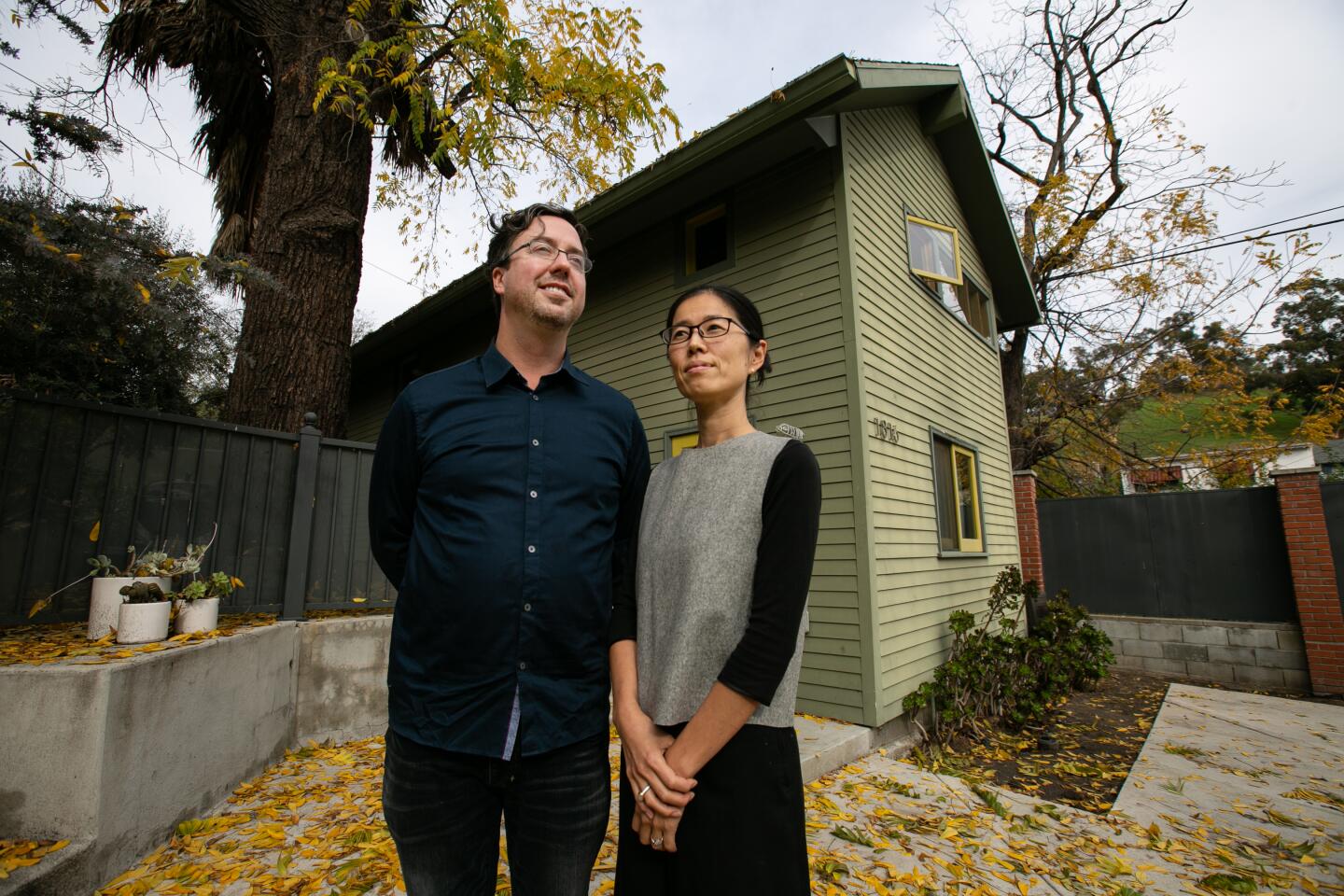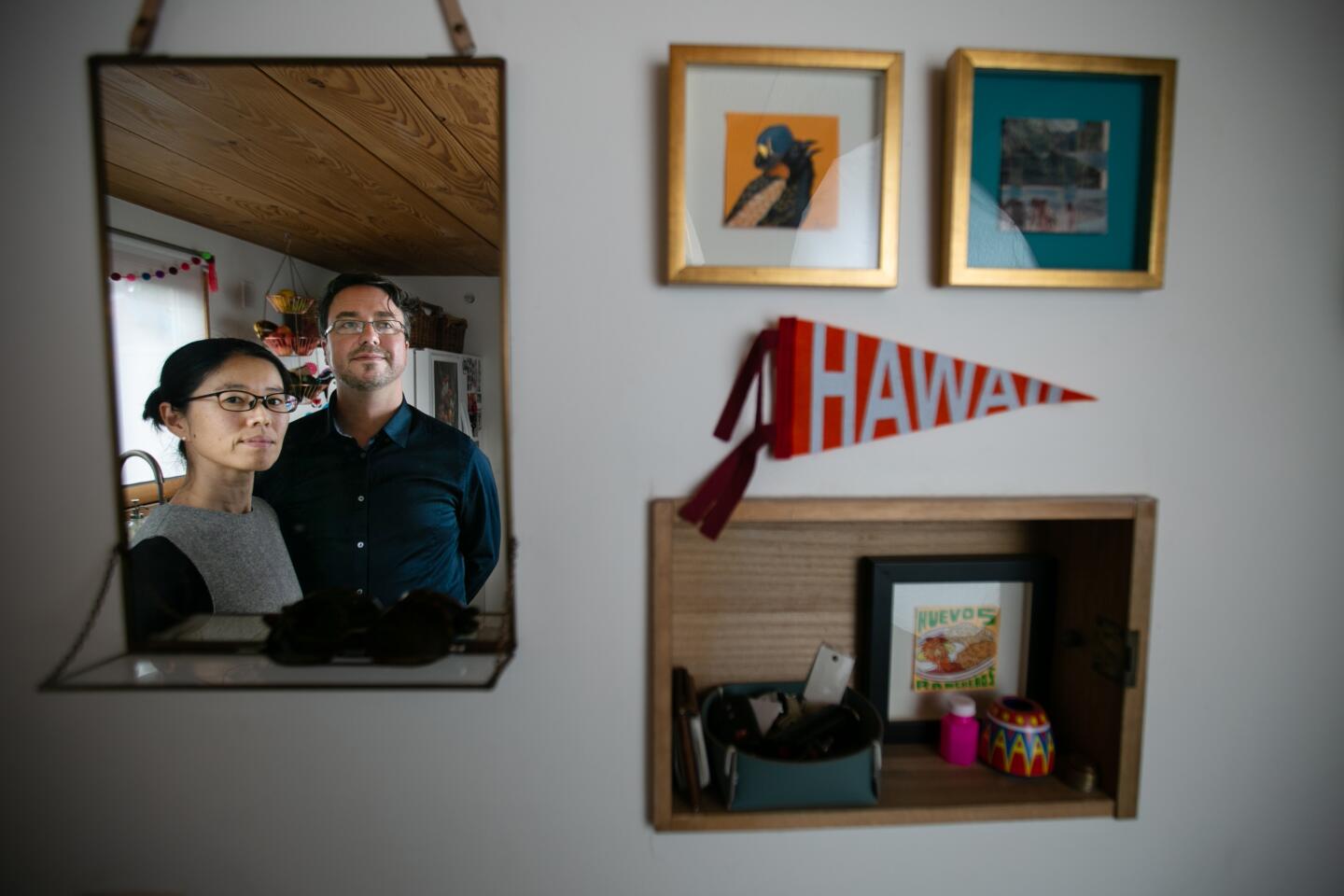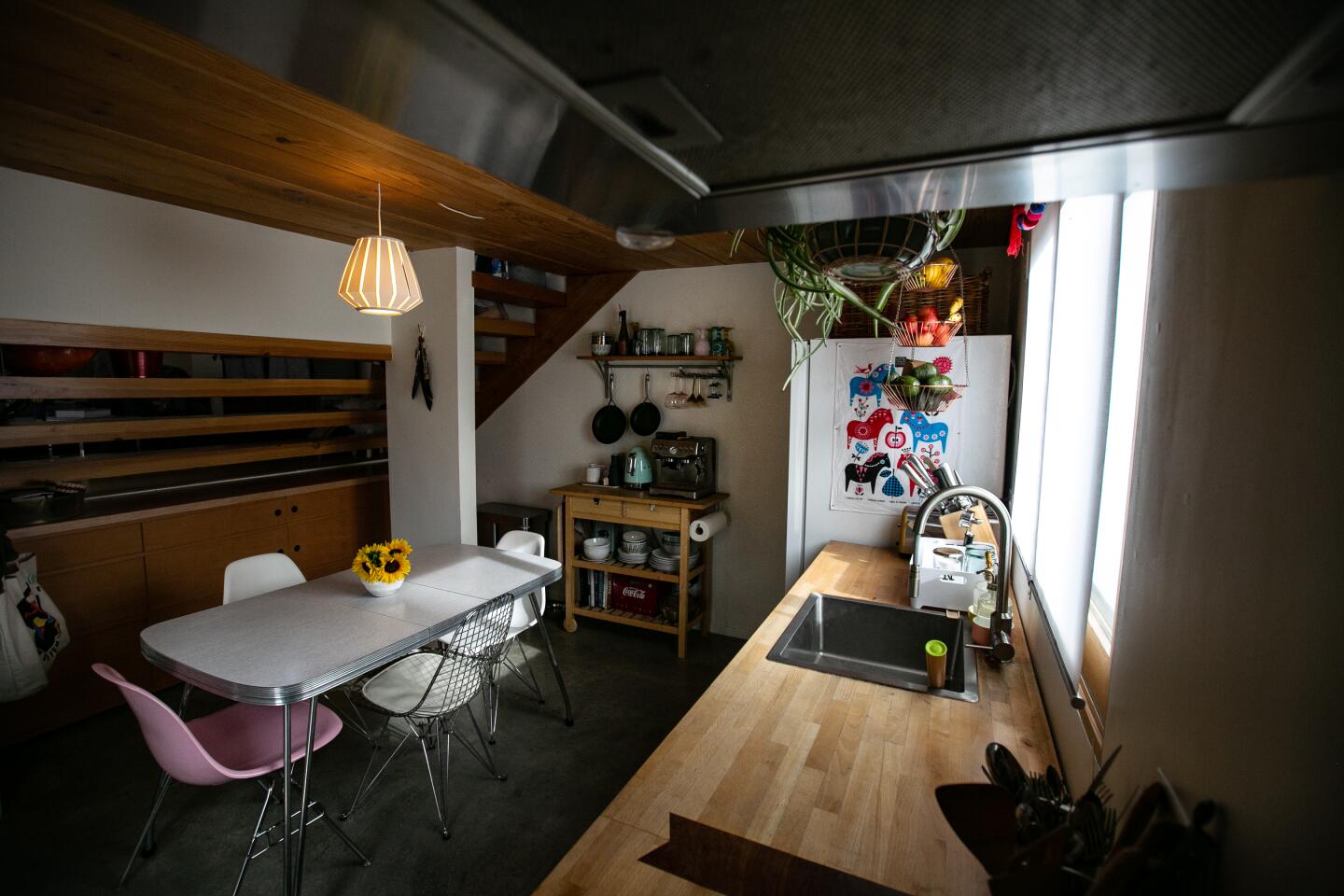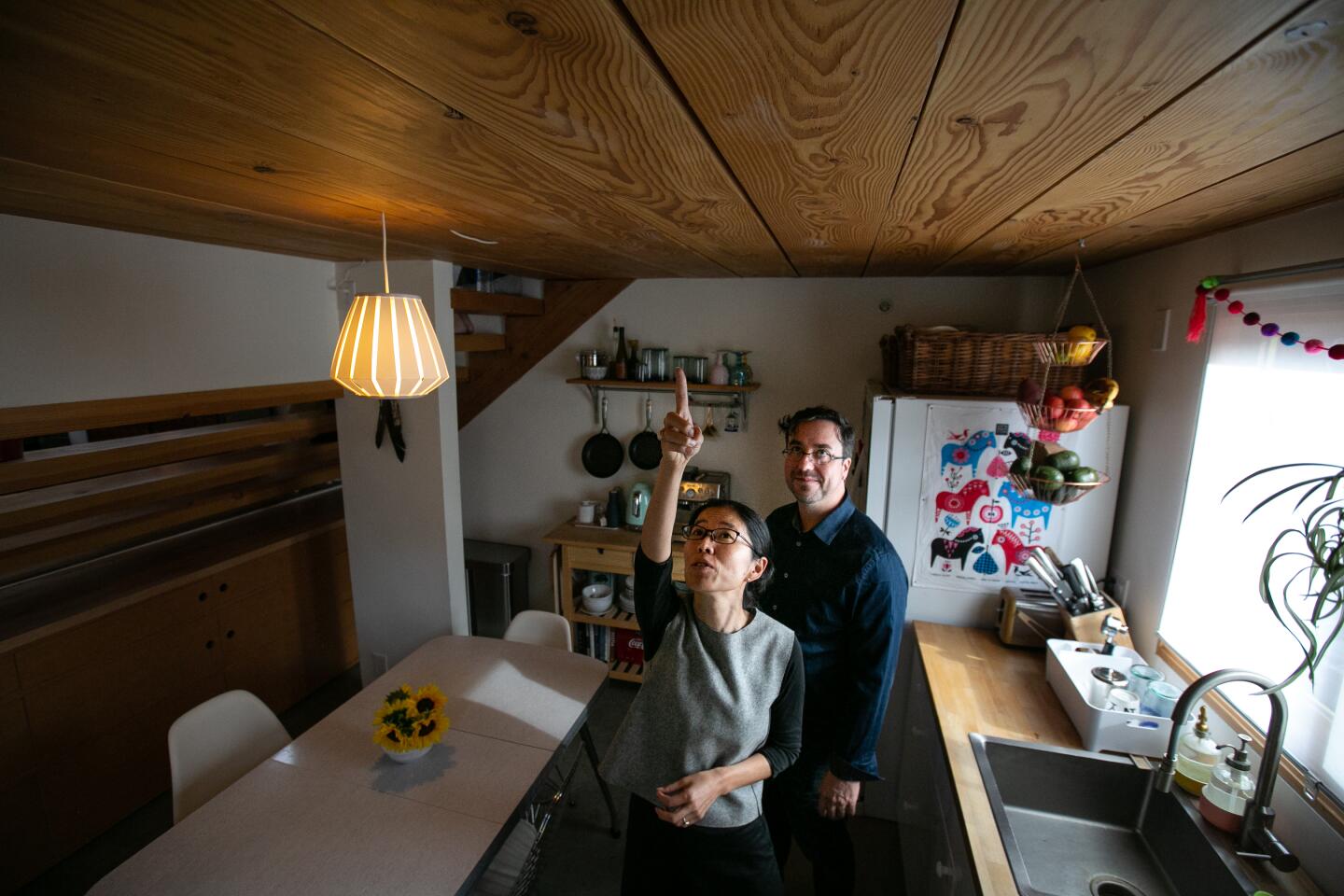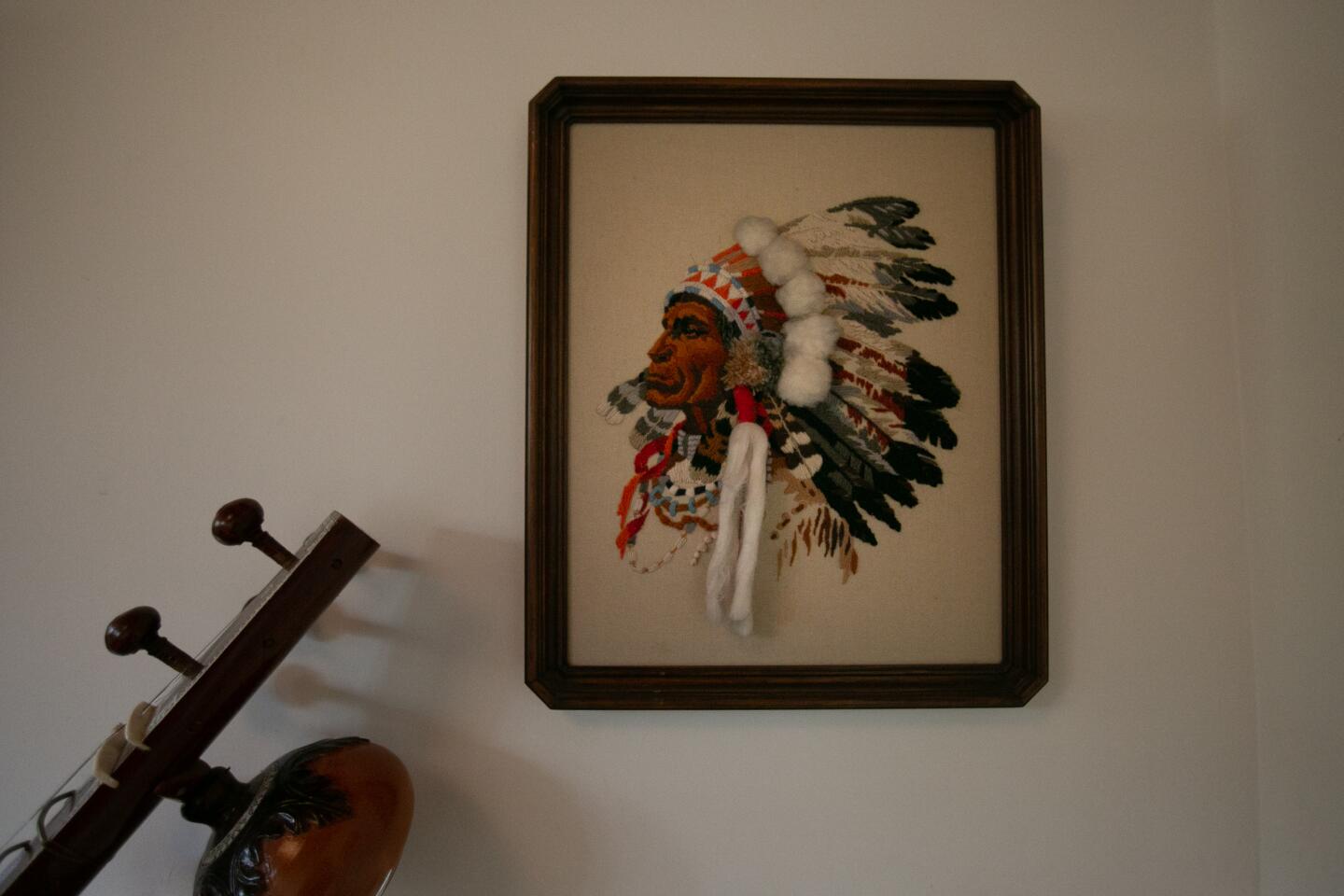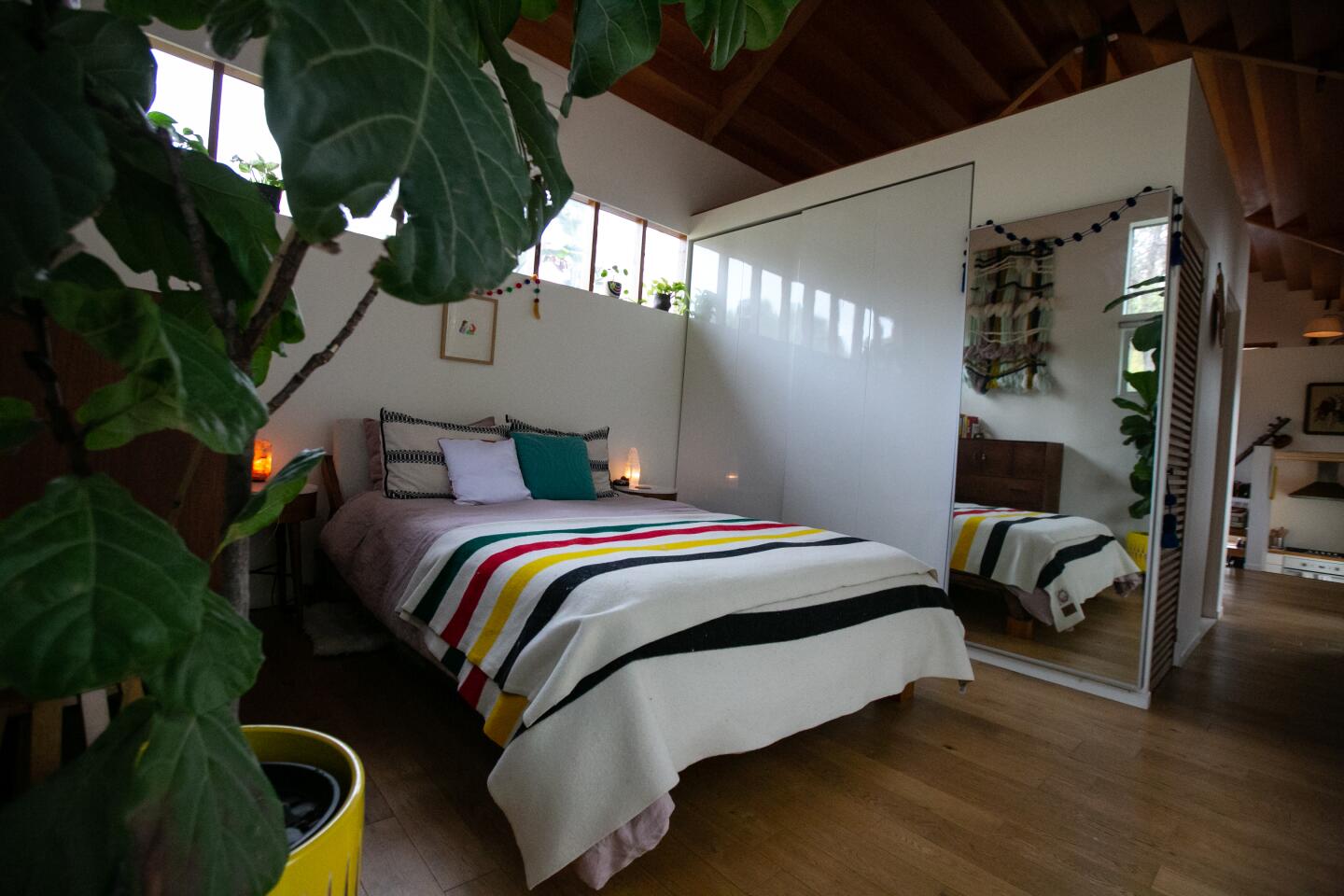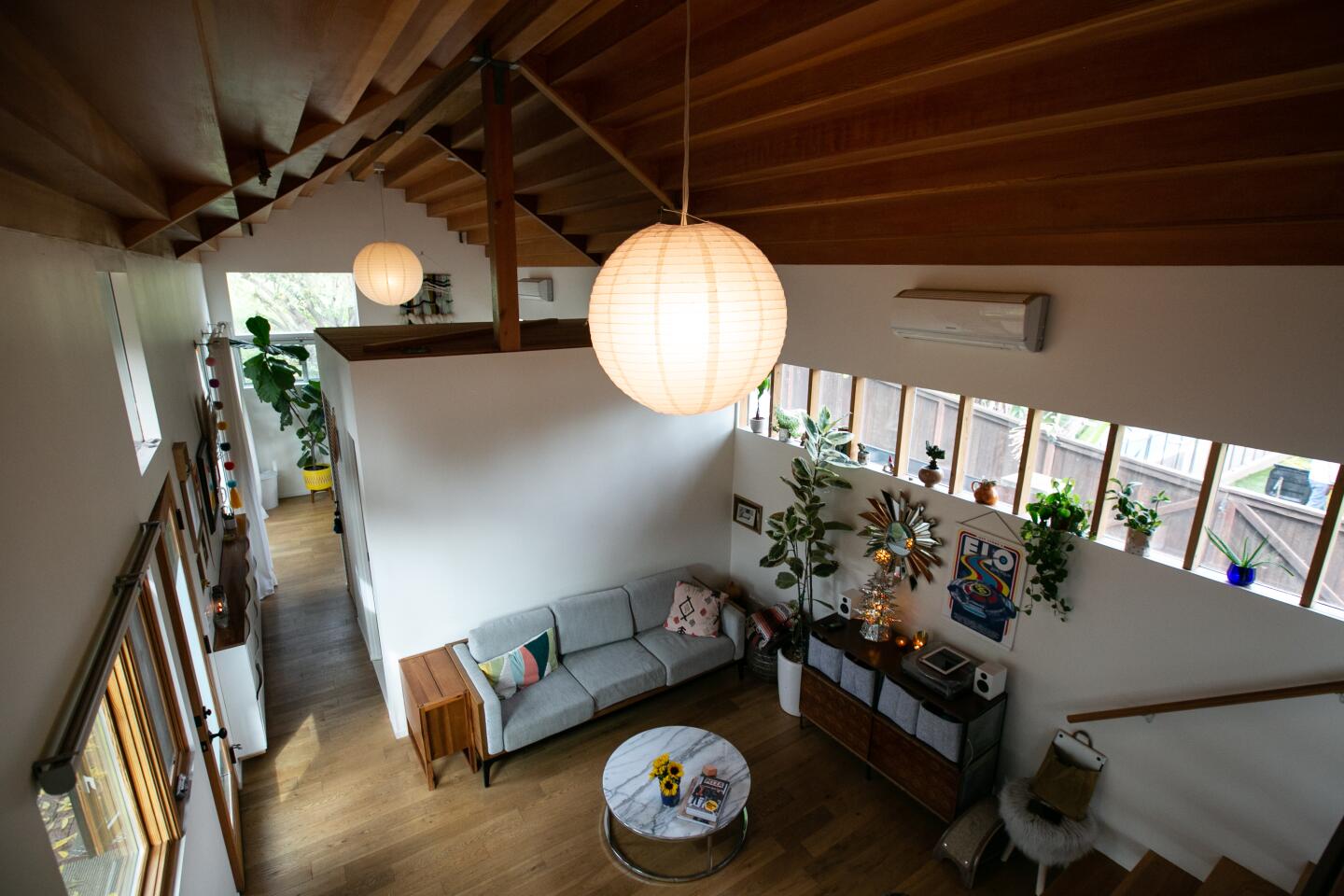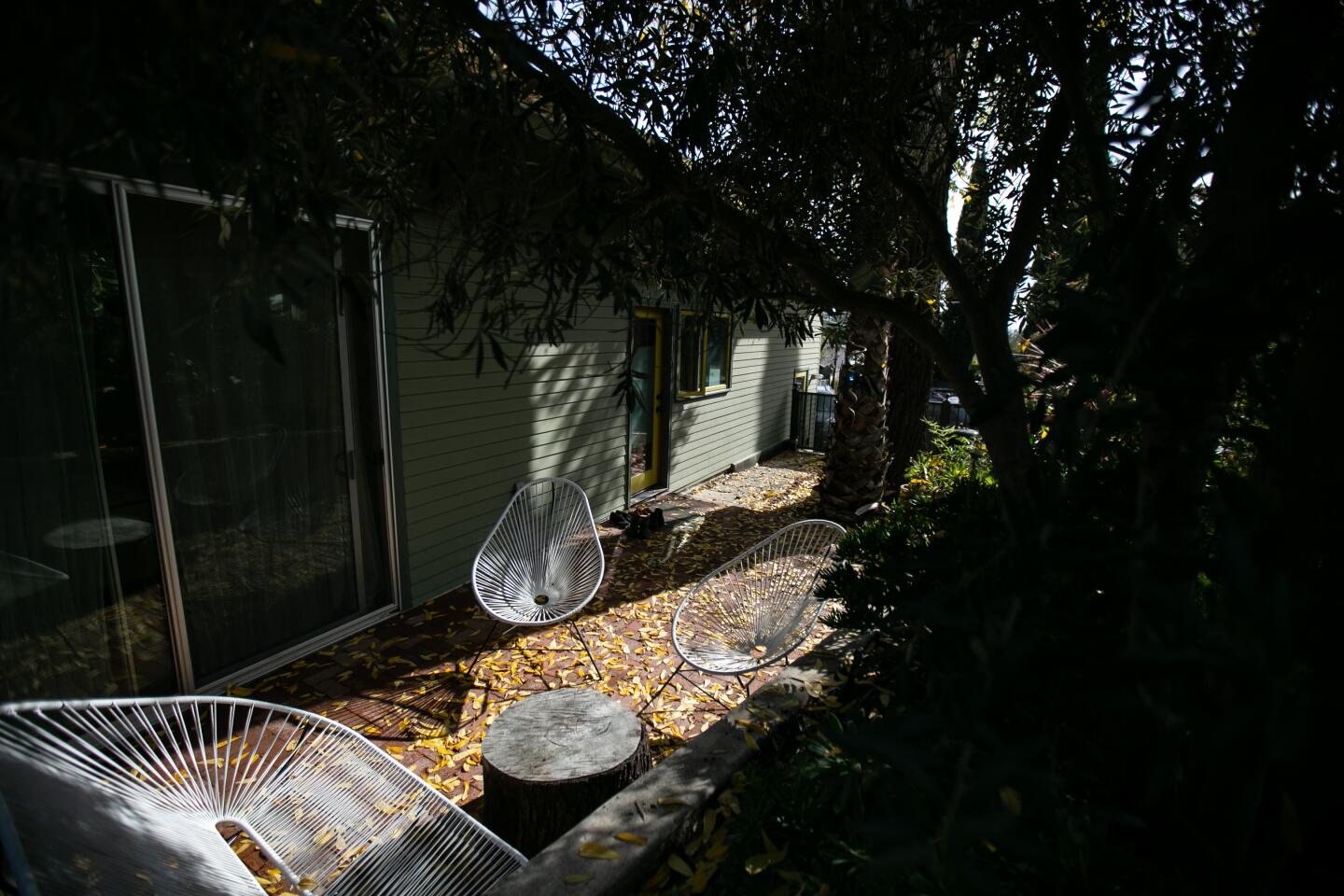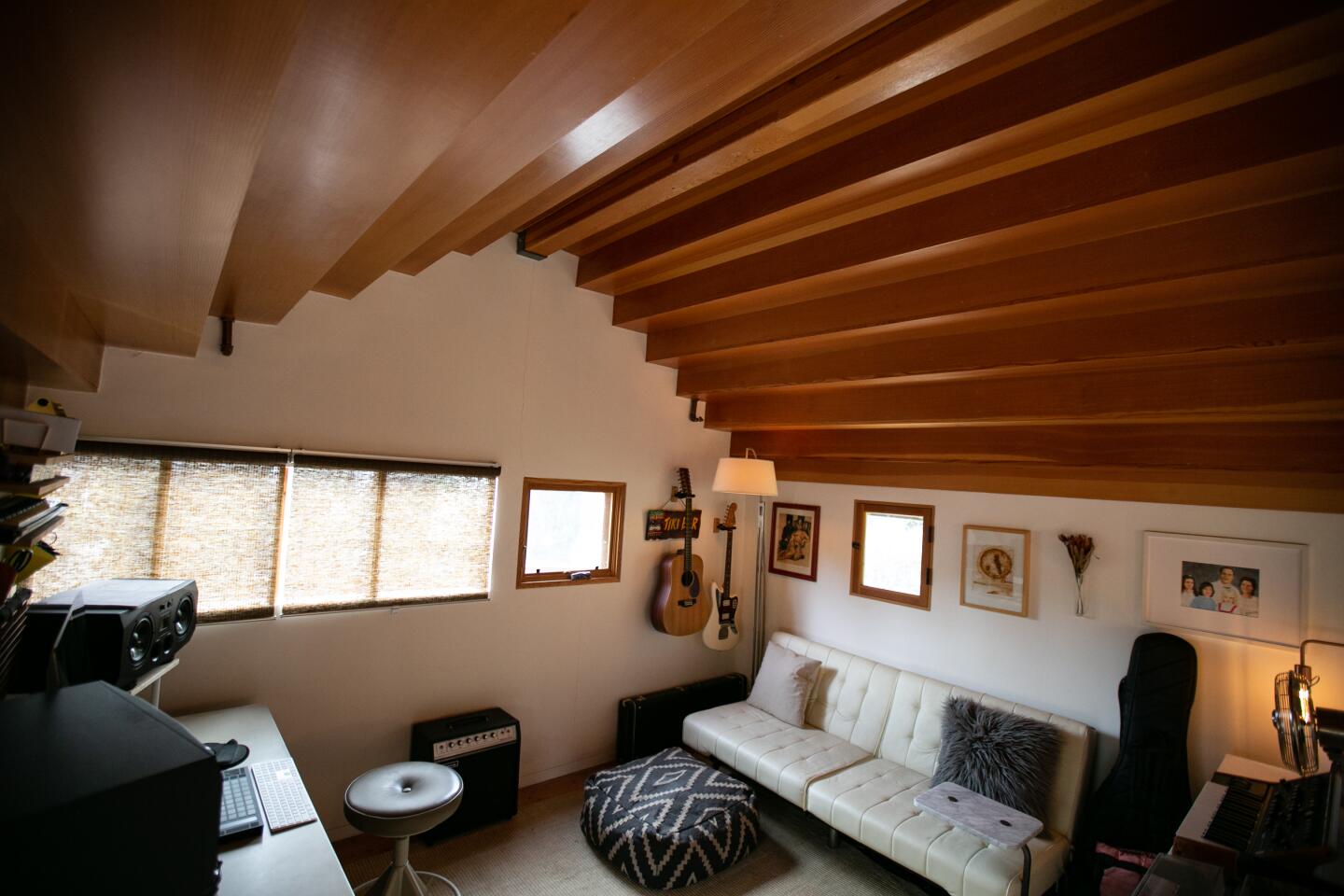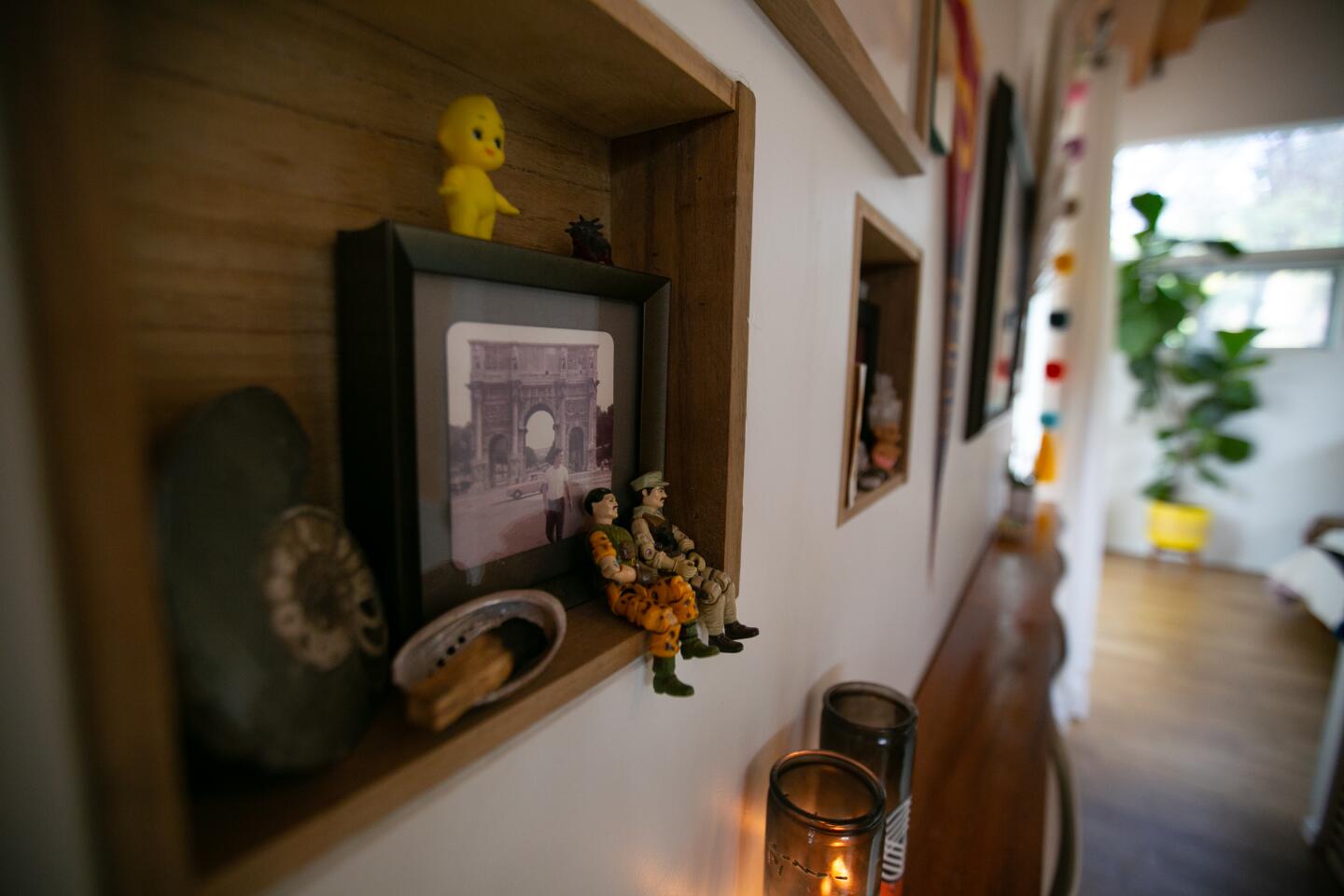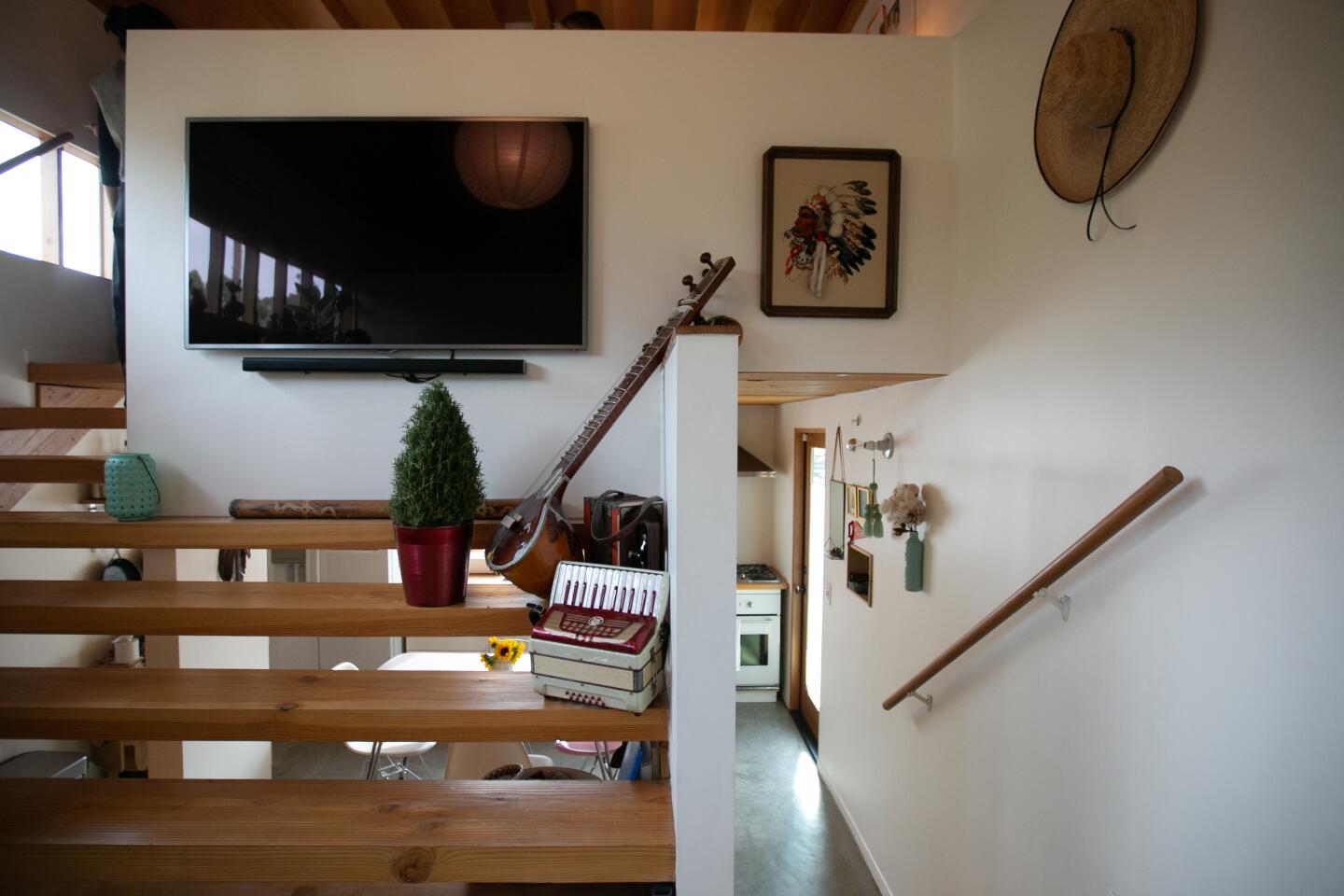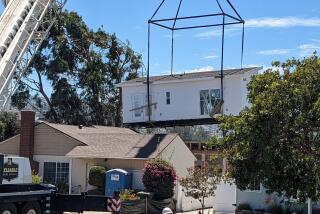Granny flats and converted garages are going upscale
Time was, accessory dwelling units in California were often just slapdash drywall jobs, turning drafty garages into passable but unpermitted guesthouses and granny flats.
Now, with state regulations evolving over the past three years to allow and even encourage ADUs, once outlawed in-law suites have not only gone legit, they’re taking a design-forward, upscale turn.
Enter bunchADU, a subsidiary of Los Angeles-based Bunch Design, founded by husband-and-wife team Bo Sundius and Hisako Ichiki. The couple’s new venture offers custom and pre-designed ADU prototypes to enterprising homeowners.
Their design-driven approach makes small, urban spaces in high-density neighborhoods feel larger and more expansive, relying on structural space-saving tricks such as vaulted ceilings and movable partitions, as well as inventive, varied use of materials and creative application of light, with skylights and clerestory windows.
“We asked our engineer to show us only where he needed shear walls, which keeps the home from moving in an earthquake, and everywhere else we have windows to feel light, open and bright,” said Sundius, whose first ADU was the 720-square-foot Elysian Cottage located on his and Ichiki’s own property.
Originally built for Sundius’ parents, the cottage offered flexibility, proximity and support during a challenging time for the family.
“My dad had Alzheimer’s and putting him into hospice would cost like $6,000 to $8,000 a month — it would have literally bankrupted us. But the ADU allowed us to take care of him, and they were really excited about getting a house built for them,” he said.
Inspired by the groundbreaking Case Study House Project, begun in the 1940s to encourage innovative yet inexpensive homes, Sundius and Ichiki outlined a five-point ADU manifesto ushering their approach to this new wave of design. Tenets include “expanded boundaries” by uniting private, semi-private and public spaces, creating a “new sky” with lofty ceilings and “borrowing views” to bring in light and the surrounding landscape.
“There’s a technique in Japan called tsuboniwa, where you borrow the landscape. If there’s a big mountain far away but your house is very modest, you make a little window or tiny garden and try to capture what’s beyond,” Ichiki said.
This spatial technique is emblematic throughout bunchADU’s four pre-designed prototypes, which vary in size, price and style and are designed to streamline the building process and accurately predict costs.
“These have all been built and permitted before, so a lot of the mysteries associated with construction are eliminated, and people can see them and know what they’re going to get. It just makes the idea of building an ADU in your backyard that much more tangible,” Sundius said.
On the low end, their 400-square-foot Garage Studio conversion starts at $175,000, has one bathroom and features a central skylight and trademark clerestory windows, to open up the limited space.
The Stop Making Sense ADU (named after the Talking Heads concert movie, in which a bare stage gets elements added continuously) is a two-bedroom, two-bath, 820-square-foot linear space divided by sliding panels. The Step ADU, the largest at 880 square feet, with two bedrooms and 1.5 baths, boasts high, stepped ceilings and a towering marigold yellow door inside.
Both of these start at $250,000, and all prototypes, including Sundius and Ichiki’s $225,000 one-bedroom, one-bath Elysian Cottage, exclude additional costs for utility hookups, landscaping, upgrade features and a flat design fee.
“Our projects are often for folks who have bigger dreams than bank accounts, like ourselves, so minimizing cost and making things really simple is what we do,” Sundius said.
California now allows homeowners to build up to 1,200 square feet if the ADU is detached, and half the size of the primary structure if the ADU is attached. Unit setbacks (the distance from the side and rear lot lines) must be 5 feet; fire sprinklers are not required, nor is parking, if the unit is located within one-half mile of public transit.
“L.A. has all these 1,200-square-foot bungalows sitting on 6,000-square-foot lots that are mostly flat, so it’s very easy to put an ADU in the backyard,” Sundius said. “It completely changes what you can do with your life, finances and creates a sense of community, which is really nice.”
The Elysian Cottage has seen two sets of tenants since Sundius’ parents; currently a composer and dancer rent the ADU as their home and workspace, and have become friends who lend sugar and a helping hand.
The cottage’s loft, once used as a baby room, is now a cozy music studio under the warm and cavernous Douglas fir step ceiling, which extends continuously from end to end.
“We maximized the opening so the only enclosed structural part is in the bathroom volume; that way we could have windows all across where we want,” Ichiki said.
Strategically placed clerestory windows line the perimeter of the cottage, positioned just high enough to avoid views of the neighboring rooflines while perfectly framing the lush hills, abundant treetops and blue sky in classic tsuboniwa fashion.
The kitchen, which echoes a “sort of captain’s quarters of a ship,” Sundius said, is the lowest part of the split-level structure and positioned under the loft’s stairs, to create a screening element and partial separation from the living room.
“I think it’s really important that ADUs are designed with care and love because it’s easy to convert a garage that’s fast to build and rent it out, but not part of the environment,” Ichiki said. “In the long run, when these units keep adding to the city, you really want them to be quality and not junk up the space.”
As populations flourish and Los Angeles faces a severe housing deficit, ADUs offer societal benefits by creating more living spaces, as well as personal and financial freedom to their owners.
“Jerry Brown did a really amazing job of making legislation that allows people to do this; the word just needs to get out. It asks people to be a bit of an entrepreneur and landlord, to build something and have neighbors on their property,” Sundius said. “There’s a lot of ‘my home is my castle, everyone stay out’ attitude, but it’s nicer to be denser. And L.A. needs to do it.”
More to Read
Sign up for Essential California
The most important California stories and recommendations in your inbox every morning.
You may occasionally receive promotional content from the Los Angeles Times.
